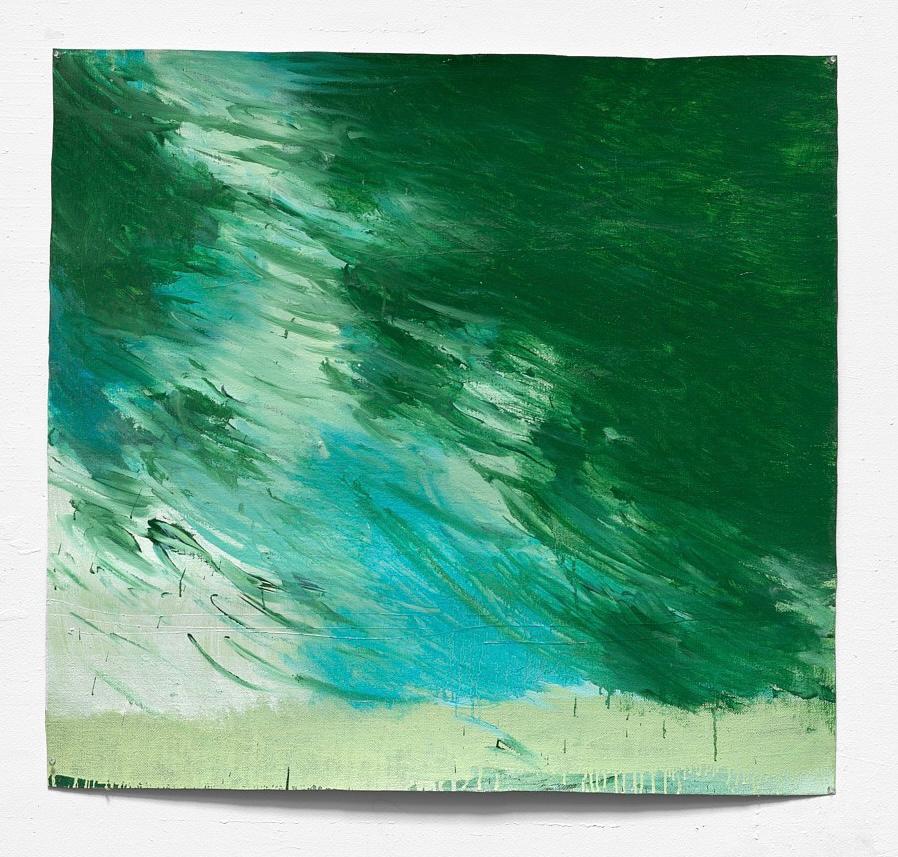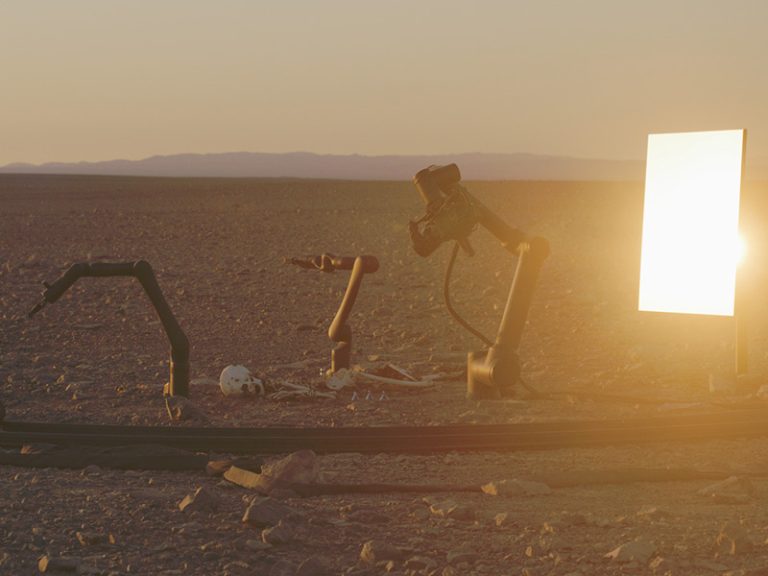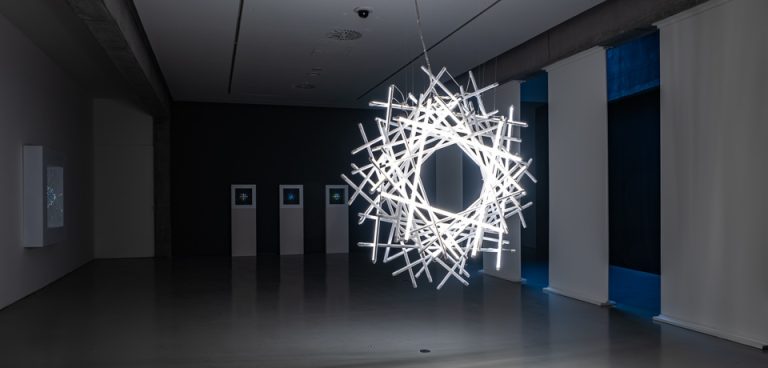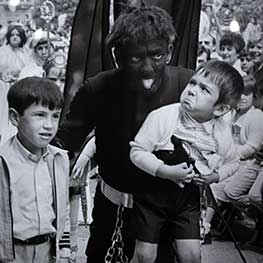Segovia,
The only genre that Hugo Fontela has explored in his painting so far is that of the landscape, also that of the landscape without figures, because he would understand it as a certain imposition to immerse the viewer in an already inhabited one. In his compositions the figurative and the abstract intermingle – the motif and the sensations that it generates in the artist – and his working procedure, at least until recent years, used to be repeated: part of the image of a place, normally natures that They attract, to analyze them closely, memorize them and end up visualizing their memory and giving shape to it on paper, board or canvas.
This Asturian author, born in 1986 in Grado, collects and treasures clippings, photographs and old books with a neglected appearance that are related in a more or less obvious way to the image he wants to work with; He selects them because they suggest some strange and unusual evocation, a twist to some place. His objective, ultimately, is to build pieces in which the unreal is an essential aspect to be able to understand them; create new realities and ensure that the image that moved you at first also moves the public.
He trained, when he was very young, at the Avilés School of Arts and Crafts, alongside a well-known painter in Asturias, Amado Hevia “Favila”, from whom he learned what he considers the rudiments of painting; When he was of age, he attended the Art Students League in New York and lived in the United States for nearly a decade. It would be there where he would begin to transfer ideas and impressions into his compositions, instead of defined scenarios, under the influence of an oriental lyrical aesthetic and also of the American abstract expressionists; At that time, in addition, he decided to use large formats (along with Rothko, Kline, Motherwell, De Kooning, Cy Twombly, Guston or Resnick, Beruete, Morandi, Monet, Sorolla or Esteban Vicente).
He would dedicate his first landscape images to the Hudson River or the Village, a theme that finally prevailed in his production after Fontela traveled, in 2010, to the Gulf of Mexico; His paintings of palm tree trunks stranded on expanses of white sand, islands immersed in an enormous sea in contrast with them or rocks emerging, likewise, from the water would derive from his contemplation of his beaches. Since 2020, green, as an emblem of overflowing nature, is a fundamental presence in his work; A selection of those that have occupied him since that moment can be seen, until next September, in “Notes for a Paradise”, an exhibition offered by the Esteban Vicente Museum in Segovia with the collaboration of the Marlborough Gallery in Madrid (about to be the latter, to close).
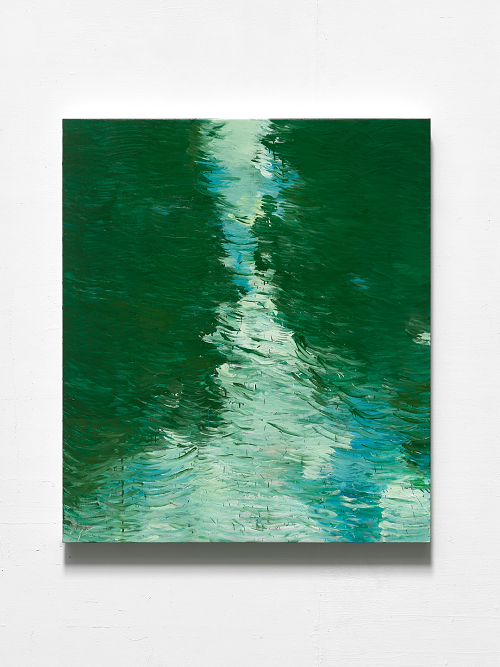
The sample consists of notes on fleeting moments that Fontela wanted to capture – in oils on paper, board or canvas, compared to his usual acrylics from the beginning – before they escaped: there is no narrative will in these images, but rather an exercise of capturing the ephemeral that starts from the artist's consideration of painting as a possible place for encountering the natural environment. The route is divided into three series, dated between 2020 and 2023: River, Green and Paradise, although the evolution, or transitions, between one and the other is not too marked, unlike his previous sets of work. This has to do with the abandonment of the methodical and rational processes that it had been managing until now (those that we explained at the beginning) to adopt greater fluidity, although it has made this freedom compatible with the maintenance of an external trigger (a real landscape motif). as starting point.
The paintings that Fontela has brought to Segovia, in contrast to the precision in the drawing of his earlier ones, have in common their gesturality, arising from the use of quick brush strokes superimposed on subtle layers that, at times, he also nuances with his fingers.
The origin of River, the first of these series, are his memories of an Asturian river that made itself known discreetly among the undergrowth; He photographed him as a teenager, and those snapshots have had an important weight in the oil paintings, in which the water and the greenery of the thicket seem to merge and the treatment of reflections stands out, bringing the pieces closer to abstraction. Greenrather than as an autonomous series, can be understood as a station in the cycle that began with that landscape: it is made up of large-format works in which the pigment does not completely cover the surfaces, leaving the margins untouched.
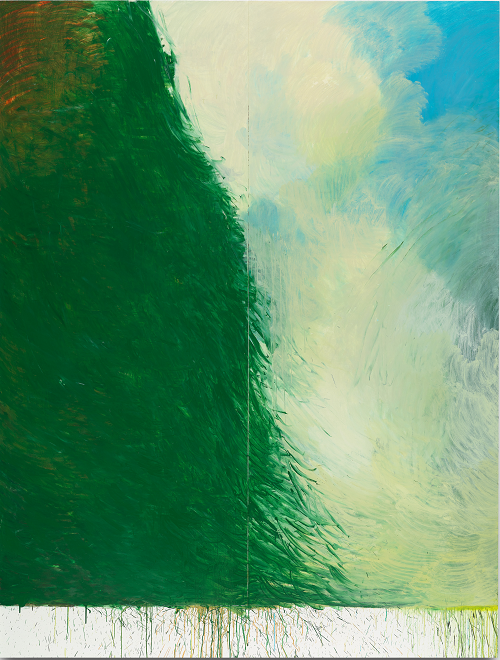
From brushstrokes of blue, green and white, confusing horizons are generated: water and sky are linked, while the vegetation seems to burst in energetically in certain strips of the composition to dilute in the rest, as if it were fading, a feature that bring these images closer to Green paintings that Cy Twombly carried out in the eighties and that he never exhibited. In them, the frames were incorporated into the paintings.
Finally, Paradise supposes, in this continuous path, an extension of Green, but also a recreation of the concept that Fontela maintains of paradise (nature, the work in painting, the conjunction of both) and the feeling of joy he experiences for having found it. The formats, this time, are panoramic and the application of the tones (carmine, yellow, blue, green and white that is not completely white) attends to what the artist seduces about the landscape: the fluidity, the harmony and the rhythm.
“Notes for a Paradise” is also completed with some works on paper in which we can get closer to his trials before displaying those colors on large canvases.

Hugo Fontela. “Notes for a paradise”
ESTEBAN VICENTE MUSEUM OF CONTEMPORARY ART
Plaza de las Bellas Artes, s/n
Segovia
From April 26 to September 15, 2024

